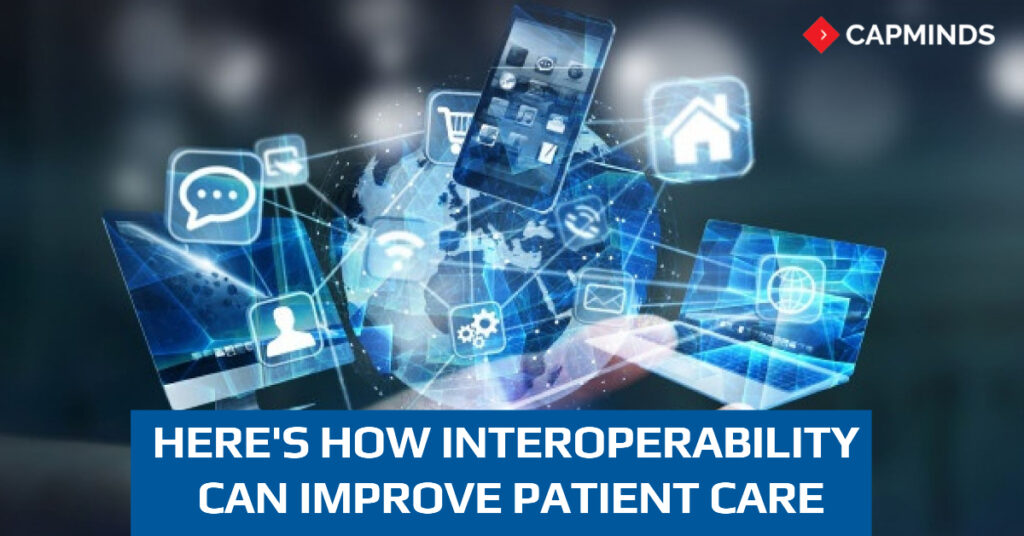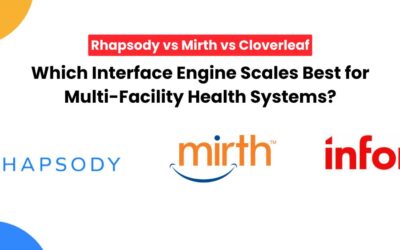Here’s How Interoperability Can Improve Patient Care
As technology is advancing day by day, healthcare organizations started accessing the best and secure tools for better information. Modern day patients expect their health data to be readily available as they move from one provider to the next, and some of the nation’s largest tech companies indicate that they’re working toward a solution that would make this possible: healthcare interoperability. Reducing wait times, eliminating room for error and improving the quality of healthcare in general has drastically improved the affordability of care. Interoperability in healthcare has lead this change. Here’s is how interoperability can improve the quality of care.
1. Reduces Medical Errors
The recent analysis states that medical error rates are significantly higher in the U.S. than in other developed countries, which makes finding a solution to reduce them even more pressing. Interoperability offers organizations ways of preventing medical errors by making it possible to share data across systems and applications. By creating and implementing advanced interoperability, with the aim to capture and interpret data across systems and applications, healthcare organizations can better prevent errors due to missing or incomplete patient data. This allows care providers to have a better understanding of how and why these errors occur and empowers them to take action.
2. Increases Efficiency and reduces costs
Presenting data to care providers in real time and in a consistent manner can boost efficiency across an entire organization. For example, an emergency room patient might need blood tests performed, costing the healthcare system time and money. With interoperable data across organizations, a care provider might access the patient’s health record and find they already had blood tests conducted earlier in the week. In some cases, that data would be usable, helping the patient receive more rapid care.
A seamless exchange of health data will not only cut down on the repetitive tasks physicians often perform, but also on the administrative ones, such as patient data entry. This will help reduce rates of physician burnout, greatly impacting the quality of care being delivered and leading to more cost savings and efficient workflows.
3. Develops robust national networks
The creation and sharing of aggregated patient health information across disparate electronic health record (EHR) vendors supports more accurate tracking and improved quality of care. By sharing data more effectively, interoperable systems can help significantly to improve health outcomes, lower the cost of health care delivery and enhance the patient experience. And with easier access to data, everyone can be more engaged in their own health care.
4. Strengthens care coordination
With up-to-date patient data at their fingertips, providers, patients and caregivers can make fully informed care decisions. People who have access to their own medical history and records can make more informed clinical decisions and become more empowered participants in their own care. Rather than having referred patients sign into multiple portals and bring boxes of health records to their first appointment, interoperability gives us the ability to access patients’ records across care venues.
5. Improves patient experience
Patients must often do administrative tasks like search for documents, fill out multiple forms, re-explain their symptoms or medical history and sort out insurance (both before and often after receiving care). Interoperability can vastly improve this process, giving patients faster, more accurate and coordinated treatment and enhancing their overall experience.
6. Enhances patient security
Patient privacy and security are the primary care and regulatory issues to consider when implementing interoperability. This is not an easy task, but it can help enhance the privacy and security of patient data by requiring organizations to fully assess where their protected health information (PHI) resides and with whom it needs to be shared. When organizations enter data into systems that cannot communicate with one another, for example, it becomes difficult to track all systems that touch PHI, as required by the HIPAA Security Rule.
The interoperability of EHRs, however, offers clinicians the ease of mind that the PHI they input is secured. When PHI is entered into secure, interoperable systems, organizations gain a better idea of where their data live and who has access to it, helping them secure patient data and protect privacy.
7. More accurate public health data
Where interoperability is present, IT systems can interact in such a way that faster and more accurate collection and interpretation of public health data are possible. This can help organizations answer pressing questions for both patients and providers. By facilitating the sharing and interpretation of such health data, interoperability allows healthcare organizations to collectively educate one another on predicting and preventing outbreaks.
Final Thoughts
Achieving true interoperability in healthcare will be an ongoing journey. However, it is a worthwhile venture as the benefits have the potential to improve patient care to unprecedented levels. With a comprehensive understanding of true interoperability within your healthcare system and a vision for patient care, you can begin your path to interoperability with the ultimate goal of improving patient care.




